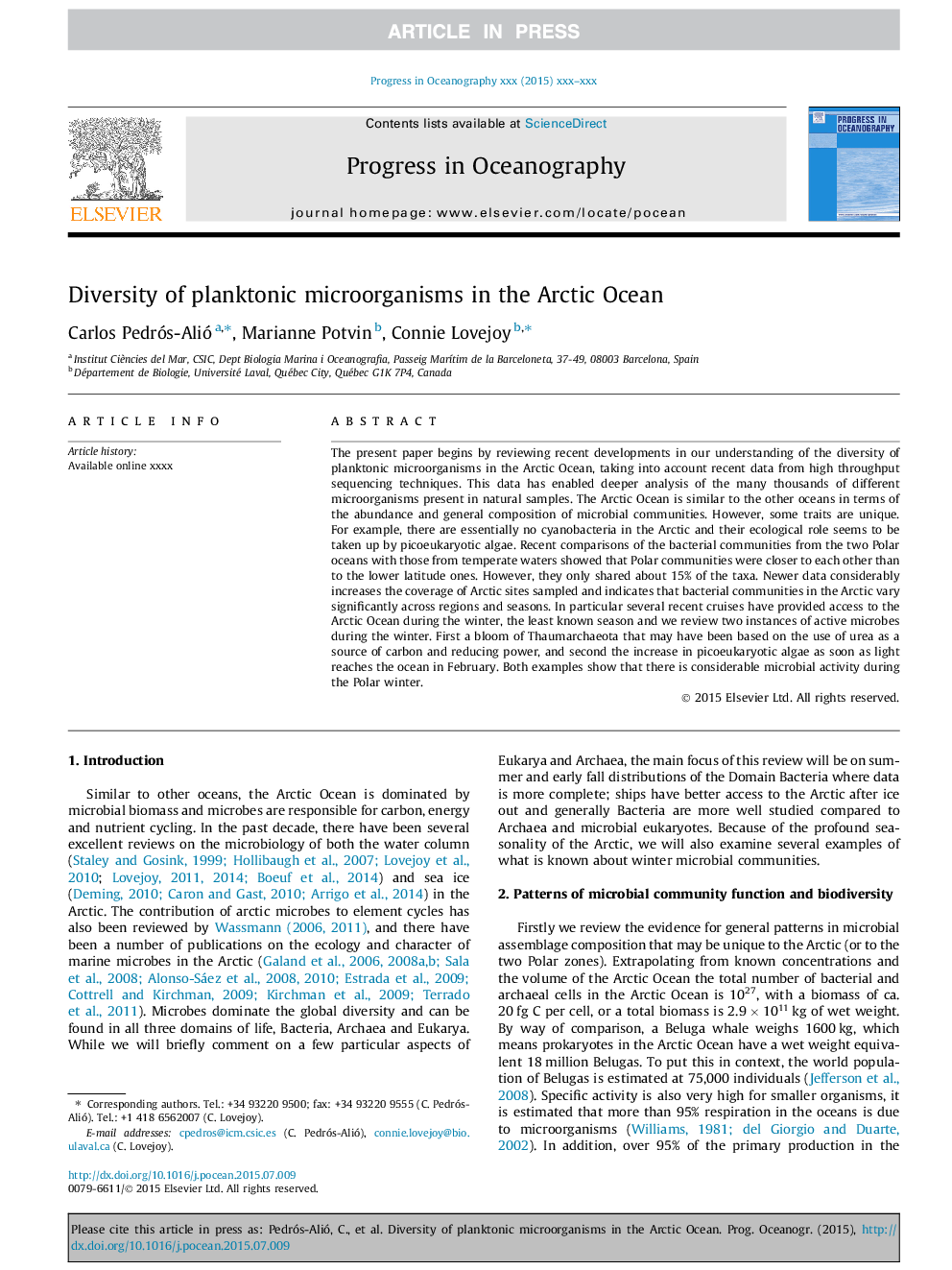| Article ID | Journal | Published Year | Pages | File Type |
|---|---|---|---|---|
| 6388446 | Progress in Oceanography | 2015 | 11 Pages |
Abstract
The present paper begins by reviewing recent developments in our understanding of the diversity of planktonic microorganisms in the Arctic Ocean, taking into account recent data from high throughput sequencing techniques. This data has enabled deeper analysis of the many thousands of different microorganisms present in natural samples. The Arctic Ocean is similar to the other oceans in terms of the abundance and general composition of microbial communities. However, some traits are unique. For example, there are essentially no cyanobacteria in the Arctic and their ecological role seems to be taken up by picoeukaryotic algae. Recent comparisons of the bacterial communities from the two Polar oceans with those from temperate waters showed that Polar communities were closer to each other than to the lower latitude ones. However, they only shared about 15% of the taxa. Newer data considerably increases the coverage of Arctic sites sampled and indicates that bacterial communities in the Arctic vary significantly across regions and seasons. In particular several recent cruises have provided access to the Arctic Ocean during the winter, the least known season and we review two instances of active microbes during the winter. First a bloom of Thaumarchaeota that may have been based on the use of urea as a source of carbon and reducing power, and second the increase in picoeukaryotic algae as soon as light reaches the ocean in February. Both examples show that there is considerable microbial activity during the Polar winter.
Related Topics
Physical Sciences and Engineering
Earth and Planetary Sciences
Geology
Authors
Carlos Pedrós-Alió, Marianne Potvin, Connie Lovejoy,
